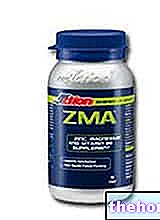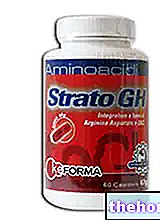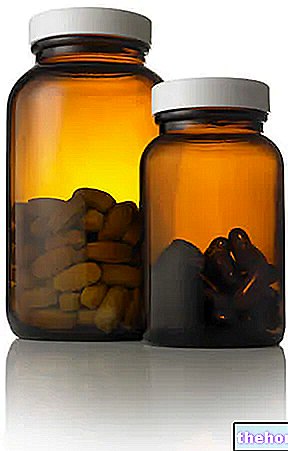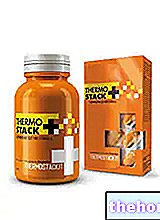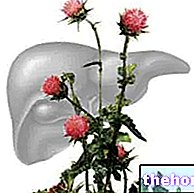Since the time of Hahnemann (the "father" of homeopathy) opposing schools were born, which disputed on particular aspects relating to the technique of administering the remedies. The most important homeopathic addresses are five:
1) Unicism, which supports the use of only one drug at a time;
2) Pluralism, which supports the use of even more drugs at the same time, as long as they are administered at different times, even during the same day;
3) Complexism, which supports the use of several remedies, even contained in the same product or of several single remedies administered at the same time;
4) "Homotoxicology, which is a form of Complexism based on concepts drawn from modern biochemistry and toxicology. In the same product, intermediate products of the Krebs cycle (the fundamental cycle of metabolic transformations of the body), catalysts (in particular trace elements) are administered. such as selenium and copper), nosodes, organotherapy and of course homeopathic products, but often with more potencies (for example, Arnica D 5 and Arnica D 30);
5) "Eclecticism, which is not an address in itself, but is practically the way of prescribing three quarters of homeopathic doctors, who also proclaim themselves unicists, but in any case, according to the cases, administer complex remedies; more rarely happens the reverse for pluralist and complexist doctors, who less frequently use single remedies.
Complexist homeopathy
Several homeopathic remedies are combined in a single product: for unicist homeopaths this is a real heresy.They are right when they argue that the complex remedy does not equal the simple sum of the addends; but precisely for this reason a new product is formed, which, for the purposes of effective action, is equivalent to the lowest common multiple of the components, or to the therapeutic action that all the components have in common. Moreover, even the products of unicist homeopathy, in reality - apart from some monocomponents such as products deriving from heavy metals - are in fact multicomponent.
Eclectic homeopathy
It contemplates the use, depending on the individual case, of one type of homeopathy rather than another; at the beginning of a case, when the symptoms are complex and made difficult to interpret by the interference of bad habits and chemical drugs, we prefer to use homotoxicology, then the French pluralist homeopathy, then the German unicist homeopathy and finally the kentian unicist homeopathy.
French pluralist homeopathy
Different homeopathic remedies are administered at different times during the day or week and they are accompanied by the use of the so-called biotherapics: gemmotherapies, organotherapies, lithotherapy, phytotherapics.
Kentian unicist homeopathy
James T. Kent (1849-1916), an American, wrote a famous repertoire of symptoms to facilitate the retrieval of the homeopathic simillimum, and was more purist than Hahnemann himself. Also for this reason, homeopathy lost so much following in those days in the United States, which it then never recovered. On the other hand, every homeopath owes gratitude to Kent for the work produced, so precious to generations of homeopathy lovers. .
German unicist homeopathy
Hahnemann's thought had an enthusiastic scholar among his contemporaries in Baron von Boenninghause (1785-1864), who converted to homeopathy after being cured by a doctor friend Weihe, a homeopath, of a serious illness. He is the author of an important Repertory, less widespread than that of Kent. Thanks also to him, the German unicist homeopathy takes on a more pragmatic and organicistic character than the Kentian one. Modern representatives of this direction are Horst and Michael Barthel, C. M. Boger, G. Kshier.
Homotoxicology
It is "homeopathy based on modern toxicology and biochemistry; is historically the daughter of Schùssier's biochemical homeopathy and German complexist homeopathy, and was born in Germany by Hans Heinrich Reckeweg (1905-1985), with the publication of the work Homotoxine una Homotoxicose, Grundiagen einer Synthese der Medizin (Homotoxins and homotoxicosis, foundations of a synthesis of medicine). Reckeweg's declared aim was to allow the "approach and fusion of homeopathy and academic medicine. In Italy the homotoxicological program was taken up by Dr. De Santis, founder of OTI (homotoxicological Homotoxicology uses homeopathic products deriving from the intermediate products of the Krebs cycle and the quinones of the respiratory chain, in composition with organopreparations and nosodes, in order to remove from the body the toxins that accumulate there, consisting of bacteria, viruses, polluting substances, waste not disposed of the intermediate metabolism, not sufficiently stranded by the emunctors (kidneys, liver, intestines, skin, sweat).
In the homotoxicological conception, the gradual accumulation of toxins in the body, or their failure to dispose of them, leads to an increasingly serious phase of disease: Reckeweg distinguishes six phases, corresponding to successive levels of intoxication; they range from the irritative or expulsion phase, in the which toxins do not remain in the body but are continuously eliminated, in the inflammatory phase, in which toxins tend to persist in the extracellular spaces, creating a rejection reaction (inflammation) by the organism; a deposit or accumulation phase, in which toxins accumulate in the form of calcium salts in the biliary tract, urinary tract, lymph nodes, prostate, uterus and arteries; an impregnation or imbibition phase, in which the toxins also begin to accumulate inside the cell, preventing the activity of the mitochondral respiratory chain, which supplies energy to the cell and predisposes to the next two phases, respectively consisting of the degenerative phase and the neoplastic phase. The administration of homeopathic homotoxicology neutralizes the toxins , which are in a certain sense chelated or pinched where they are, neutralized and finally removed through the normal elimination pathways, regressing - thanks to homotoxicological purification - from one phase to the previous one, in an inverse process to that of the disease; naturally , when passing from a deposition (or accumulation) phase, for example, all at the previous stage, which is the inflammatory one, biliary or renal or intestinal colic may occur, followed by inflammation of the affected organs. This is actually the sign of an improvement, which however in official medicine is mistaken for a disease in itself and treated symptomatically with anti-inflammatories, which cause a regression of the symptoms, but at the cost of a return to the deposition phase.
Therefore the homotoxicologist knows the symptoms that can intervene in each phase and in each organ of the body and knows how to correctly interpret them, helping the organism to gradually purify itself of the toxin load.

Disclaimer
The practices described here are not accepted by medical science, have not been subjected to experimental tests conducted with a scientific method or have not passed them. This information is for illustrative purposes only.
Bibliography: notes from the degree course in science and technology of dietary and cosmetic herbal products, University of Ferrara, Prof. Alessandro Bruni
Select plant Fir Acacia Acerola Sorrel Yarrow Yarrow Yarrow Aconito Adatoda Garlic Agnocasto Agrimonia Alchemilla Alkekengi Aloe Altea Witch Hazel Ammi or Visnaga Pineapple Andrographis Anemone Pulsatilla Angelica Anise Star Anise Japanese Star Anise Bitter Orange Bitter Areca Arnica Harpagophytum Arpagophyte Artemisia Asteragus Basil Asparagus Asparagus Peruvian Asparagus Asparagus Asparagus Hawthorn Boldo Borage Shepherd's Purse Boswellia Bucco Butea superba Cocoa Coffee Cajeput Calamus Calamus Marigold Camedrio Chamomile Roman Chamomile Camphor Cinnamon Ceylon Maidenhair Capuchin Artichoke Cardamom Cardiac Thistle Asian Thistle Carvi Cascara Cassia Catecu Catha Cabbage Celandine Chicory Centaurea Cinnamon Cypress Celandine Chives Cypress Coca Cola Colchico Combreto Condurango Comfrey Coriander Cranberry Barberry American Chrysanthemum Cumin Turmeric Damiana Digital Dioscorea Drosera Dulcamara Dunalilella Echinacea Eder a Ephedra Elenio Eleutherococcus Helichrysum Evening primrose Horsetail Alfalfa Erica Euphrasia Erisimo Escolzia Eucalyptus Farfara Farfaraccio Calabar bean Fenugreek Fennel Phytolacca Frangola Ash Fumaria Japanese Mushrooms Galega Ganoderma lucidum Garcinia Cambogia Mulberry Gentian Broom Ginkgo Ginkgo Guipana Guipana Gynestra Ginkgo Hibelia Gymnasium Hibiscus Guarulp St. John's Wort Horse Chestnut Ispaghul Hyssop Jaborandi Kava kava Konjac Laminaria Cherry Laurel Lavender Lemongrass Lespedeza Lovage Icelandic Lichen Lemon Flax Lippia Licorice Lobelia Hops Maca Marjoram Maize Mallow Manna Marrubio Marrubio d "water Matè Melaleuca Meliloto American Lemon balm Myrtle Myrama Walnut Nutmeg Walnut vomica Olive tree Meadowsweet Ononide Opuntia Oregano Orthosiphon Nettle Poppy Papaya Parietaria Feverfew Passiflora Chilli Perilla Periwinkle Phyllanthus Plantain Picrorhiza Pilosella Pino Pisci dia Podofillo Polygala Grapefruit Parsley Psyllium Pueraria mirifica Butcher's broom Pygeum Quassia Oak Rhubarb Ratania Rauwolfia currant Castor bean Rhodiola Rosehip Rosemary Rue Willow Sarsaparilla Sage Elderberry Sassafras Sedum Ergot Senna Serenoa Repens Soybean Solidago Tansy Taraxus Tamarind Tamarind Tamarind Tamarind Tamarindo Ursina Valerian Vanilla Mullein Verbena Veronica Viburnum Vinca Pansy Mistletoe Vine Withania Yohimbe Saffron Ginger Pumpkin Select disease Juvenile Acne Rosacea Tinnitus Tinnitus Aerophagia Tendon Affections Afonia Aphthae Algias Functional Halitosis Breastfeeding Allergy Anemia Anguish Anxiety Arteriosclerosis Asthrosis Asthrosis Arthritis Arthritis Men Sex Woman Blepharitis and Conjunctivitis Eye bags Bronchitis Gallstones Kidney stones Salivary stones Baldness Androgenetic Candida Fragile hair Caries Headache Cellulitis Motion sickness Cystitis C limaterio Cholecystopathy High cholesterol Ulcerative colitis Colonoscopy Contusions Hematoma Convalescence Couperose Depression Dermatitis Diaper dermatitis Diabetes Diarrhea Erectile dysfunction Dyslipidemia Dysmenorrhea Dyspepsia Disturbances of vision Hemorrhoids Epistaxis Herethism Heart disease Fever Fibromyalgia Gastro-intestinal disease Flatulence Hypertension Fibromyalgia Gastrointomnia Jaundice Laryngitis Renal lithiasis Toothache Sore throat Thinness Menopause Meteorism Mononucleosis Alzheimer's disease Crohn's disease Nausea Vomiting Obesity Dark circles Onychomycosis Osteoporosis Dry skin Periarthritis Piorea Low pressure Prostatitis Psoriasis Colds Breast fissures Anal fissures Gastro-nasal rhinitis Senescence Premenstrual Syndrome Sinusitis Quit smoking Overweight Fatty liver Constipation Stomatitis Stress Cough Triglycerides high Ulcer Burns Nails Brittle flashes Heat Warts Dizziness Properties herbal Tanning Abortive adaptogenic Aphrodisiac bittering analgesic anesthetic anorectics analgesic antacid anti-allergic anti-asthmatic Antibiotic catarrh Anticellulitiche anticonvulsant Antidiaforetiche antidiarrheal edematous anthelmintic antiemetic Antiemorroidarie antiphlogistic Antiidrotiche Antinevrotiche Antioxidants antipyretic antirheumatic antiscorbutic Antiseptic antispasmodic anti-uric Aperitive Flavoring Astringent Balsamic Bechiche Capillarotrope Cardiotonic Carminative Cathartic Caustics Healing Cholagogues Choleretic Dyes Decongestants Deodorants Purifying Diaphoretic Cleansers Disinfectants Detoxifiers Thirst quenching Diuretics Exciting Emetics Emmenagogues Emollients Hemostatic Energies Hepatoprotectors Expectorants Eupepticus Moisturisers Galactosensitizers lanti Hypertensive Hypnotic Hypoglycemic Hypotensive Irritants Laxatives Soothing Narcotic Nerves Nutrients Odontalgic Pectoral Purgative Revulsive Remineralizing Refreshing Rubefacient Scialagoghe Sedative Soporifugas Sneezing Stomachic Stomatics Narcotic Vascular Tightenitis
